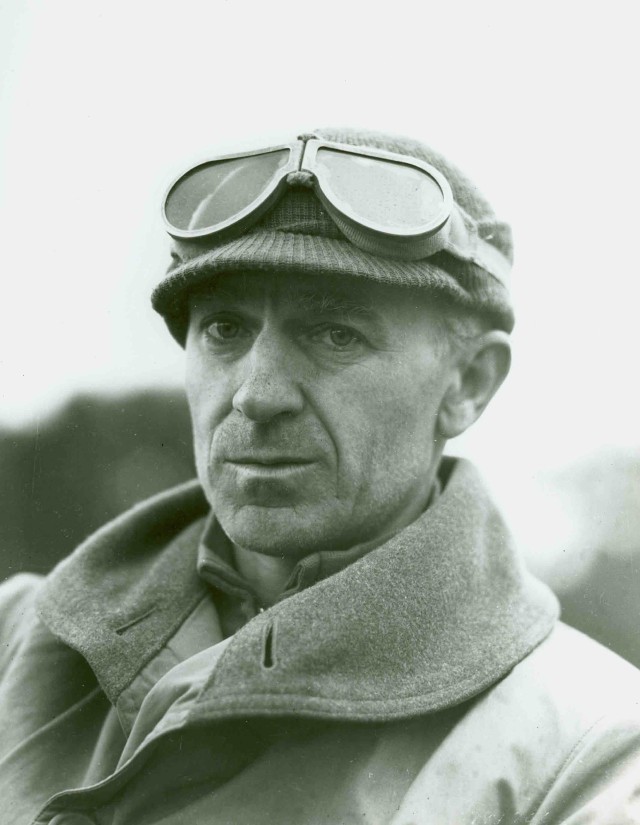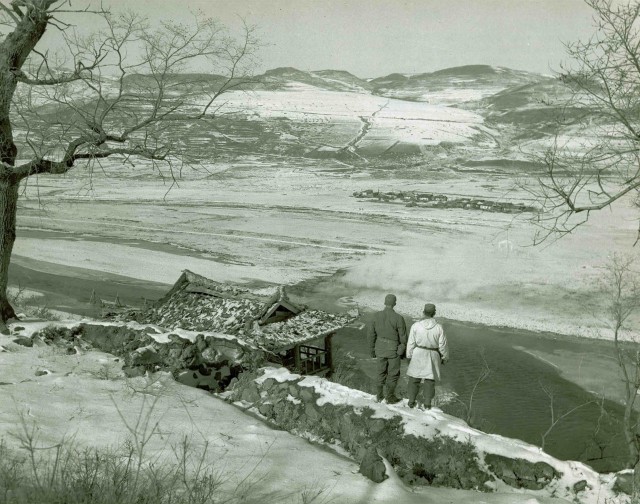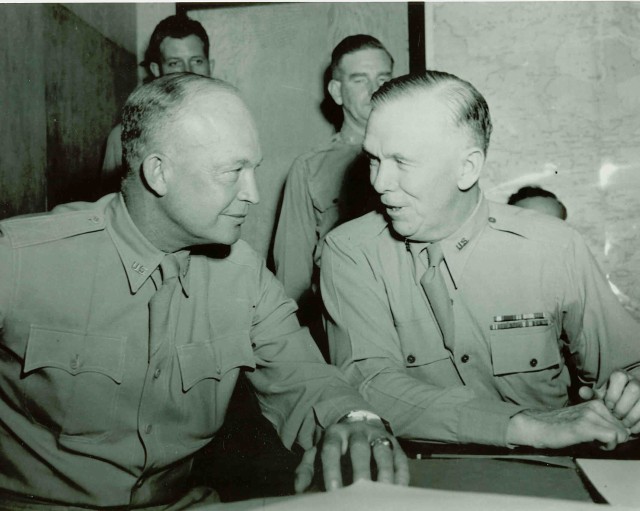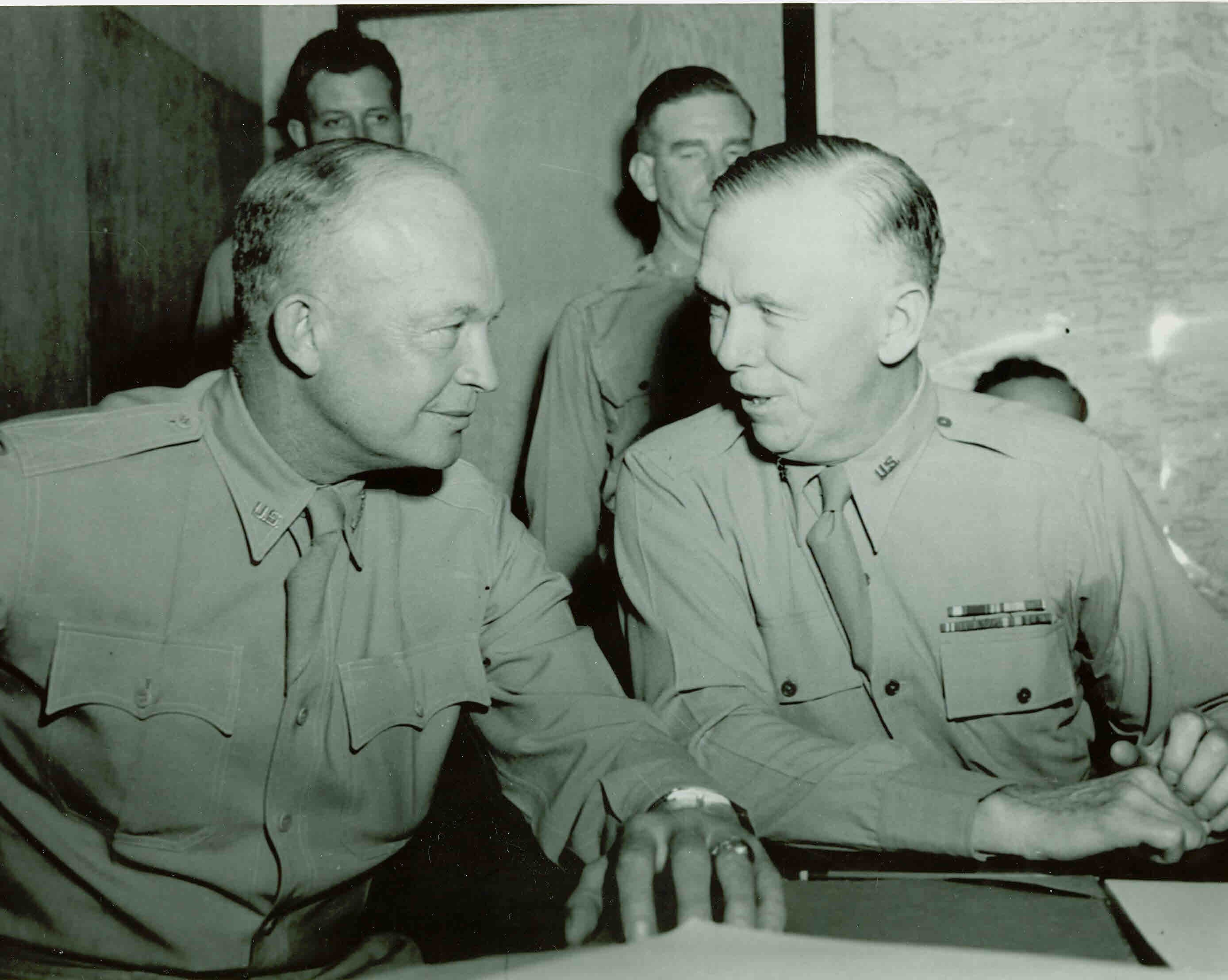The weekly article, "This Week in Army History" is, for lack of a better pun, history. And history is what we at the U. S. Army Heritage and Education Center (USAHEC) specialize in each and every day. However, this article serves as the launching of a new monthly feature titled "Army History and Heritage," which will appear on the 15th of each month, twelve times a year, and will still be found on the U. S. Army's website (www.army.mil), the USAHEC website (www.USAHEC.org), and the social networking site Facebook.
The stories themselves are as diverse as the collections in the USAHEC holdings. Our authors research and write the articles using the impressive amount of material from the collections. The photographs that accompany each article will remain high-quality images that are from the over two million photographs in our collections. So while the frequency of the articles will change, the scholarly qualities will remain the same, if not get better, because the quality of the stories will also get better as our holdings increase and the history of the U. S. Army marches on each and every day. The Army Story is more than that of great battles and heroes, however, as a selection of some of the fifty-two articles published during last year's "This Week in Army History" shows.
And what great stories they have been! Martin Andresen's "Fix it; Now!" highlighted how a World War II-era training manual from the USAHEC archives helped fix an inoperable crane during the Iraq War that made the port of Umm Qasr operational; James McNally's article, "Inspiring a Nation," gave readers the story of the Philadelphia Sketch Club, a group of famous artists that designed inspirational bond-drive and recruiting posters for the First World War and included colorful examples from the Army Heritage Museum; Pulitzer Prize winning author Rick Atkinson contributed an article every bit as hard-hitting as American bombers against the Germans in "Operation COBRA and the Breakout of Normandy." Roberta Berthelot's "The Army Response to Hurricane Katrina" told the incredible story of the U. S. Army's mobilization and heroic efforts in New Orleans after the devastating hurricane there in 2005; and Carol Funck's "The Eggnog Riot" tells readers of a little known incident at West Point in 1826 that involved future Confederate leaders Robert E. Lee, Jefferson Davis, some whiskey-laced eggnog, and the destruction of an Army barracks in which several cadets were held accountable and punished.
Dr. Michael Neiberg, Harold Keith Johnson Professor of Military History at the U. S. Army War College, wrote an in-depth piece on the allied forces in World War I, particularly the difficulty of maintaining relations with foreign armies that happen to be friendly in the midst of a coalition war in "Pershing's Decision: How the United States Fought its First Modern Coalition War." Lieutenant Colonel John Warsinske discussed the attributes and influence of General George C. Marshall, one of America's greatest strategic leaders, in "The Influence of Command: General George C. Marshall as Mentor."
Some of our other authors wrote articles on several diverse topics from Army history. USAHEC volunteer Karl Warner described the horrific conditions experienced by Army Soldiers in the bitter cold during the Korean War, and how the frigid weather was every bit as deadly as the enemy. Intern Holly Meck wrote about the war crimes of the Japanese during World War II and the subsequent tribunals held in Japan in "The Tokyo Trials." Staff member Joanne Lamm discussed the testing of the first hydrogen bomb in 1952, codenamed "Mike," and the complete vaporization of the island where "Mike" was tested; and last October, an article spotlighted the 92nd Infantry Division, the famed "Buffalo Soldiers," the only African-American unit to serve as a full division in combat during World War II in Michael Lynch's "Bring on the Buffalo."
Readers can expect that the same high-quality and scholarly articles will appear in "Army History and Heritage." The highly-knowledgeable staff of historians, archivists, librarians, interns, and museum curators will be joined by respected and award-winning authors. And while the quality will not change, there will be some changes. Aside from the new title and frequency of appearance, articles will no longer be linked to a particular week but will freely range through the broad expanse of Army history. The other major change involves the increase in word count of the articles, from an average of 800 words to that of approximately 1,000 words. This will allow for a more in-depth historical narrative and chance for both the writers and the readers to discern and appreciate the gems contained within the collections of USAHEC.
"Army History and Heritage" would like to extend thanks to the previous editor of "This Week in Army History" editor, Mr. Richard L. Baker, for successfully guiding and brilliantly expanding the scope and usefulness of "This Week in Army History" through 194 articles. His four-year tenure alerted a broad readership to the millions of items USAHEC holds in its extensive collections. From photographs to unit histories, officer memoirs to the diaries of enlisted Soldiers, each and every single source is a part of a story that fits into an overall history and tradition of the U. S. Army that have continued for over two hundred and thirty-five years.
We, the staff at USAHEC, hope that our readers enjoy the articles to come in this New Year. It is a wonderful time not only for U. S. Army history but for military history, in general. The sesquicentennial of the American Civil War will be celebrated this year. In 2012, the bicentennial of the War of 1812 will be remembered. In 2014, the one-hundredth anniversary of the start of the First World War will be upon us. As these milestones and others arrive, it is certain that "Army History and Heritage" will deliver well-written and well-researched stories on the Army's involvement in those conflicts and others from our nation's past - stories that remain both appropriate and appealing to our Army, our fellow historians, and our fellow citizens today and on into the future, as our Army continues to make its on-going history and heritage.
ABOUT THIS STORY: Many of the sources presented in this article are among 400,000 books, 1.7 million photos and 12.5 million manuscripts available for study through the U.S. Army Military History Institute (MHI). The artifacts shown are among nearly 50,000 items of the Army Heritage Museum (AHM) collections. MHI and AHM are part of the U. S. Army Heritage and Education Center, 950 Soldiers Drive, Carlisle, PA, 17013-5021. Website: www.carlisle.army.mil/ahec










Social Sharing